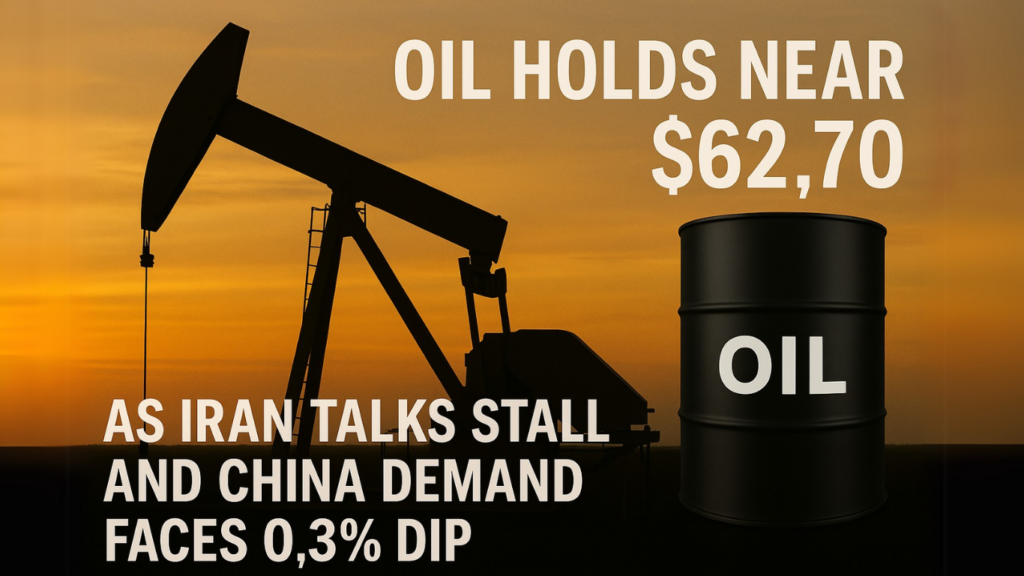Oil prices hovered near unchanged levels on Tuesday, as investors weighed the impact of stalled nuclear negotiations between the United States and Iran against signs of solid physical demand in Asia and weakening macroeconomic signals from China.
Brent crude futures edged down 6 cents to $65.48 a barrel by 03:05 GMT, while U.S. West Texas Intermediate (WTI) crude nudged up 1 cent to $62.70.
Iranian Deputy Foreign Minister Majid Takhtravanchi stated that nuclear talks would “lead nowhere” if the U.S. insisted on a full halt to uranium enrichment. His remarks followed comments from U.S. special envoy Steve Witkoff, who reiterated that any revised deal must include such restrictions—seen as a key precursor to nuclear weapons development.
According to StoneX analyst Alex Hodes, if sanctions were eased, Iran could increase exports by 300,000 to 400,000 barrels per day—shifting global supply dynamics.
Asian Refiners Support Near-Term Demand
Despite geopolitical tensions, strong demand fundamentals from Asia lent support to oil prices, particularly due to high regional refining margins.
Sparta Commodities analyst Neil Crosby noted that Asia’s buying cycle began slowly but improving refining conditions could sustain price support.
- Singapore refining margins averaged $6+ per barrel in May
- April’s average was $4.40, signaling improved profitability
- Seasonal maintenance activity is nearing completion
- Physical demand expected to strengthen further in Q3
These developments underscore a potential uptick in demand just as supply expectations remain uncertain due to geopolitical factors.
China Demand Outlook Pressures Prices
However, bearish signals from China capped oil’s upside. New data showed industrial output and retail sales growth slowing in April, casting doubt on demand projections in the world’s largest crude importer.
Moody’s recent downgrade of the U.S. sovereign credit rating added to broader risk aversion, as it raised concerns over fiscal health in the world’s top energy consumer. The downgrade cited ballooning national debt, which recently surpassed $36 trillion.
BMI Research warned in a note that China’s oil consumption could decline by 0.3% year-on-year in 2025, driven by sluggish recovery across product categories.
“Even if China introduces stimulus, the lag before it impacts oil demand could be significant,” analysts wrote.
With Iran’s supply outlook on hold, Asian refiners active, and China cooling, oil markets remain in limbo, awaiting clearer directional cues in the second half of the year.


